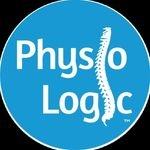Lower Back Pain! Perception Vs Reality
Lily is a physiotherapist at Physio-Logic. Her expertise targets a wide variety of clientele, from athletes to retirees. She has currently signed up to Wimp To Warrior, a 26 week adventure taking a complete newbie to having their first MMA fight!
Your disc hasn’t slipped – it ain’t no banana Peel!
According to the World Health Organisation, low back pain is the most common musculoskeletal problem globally.[1] It has been reported that 28-40% of people who have low back pain have an involvement with one of their lumbar discs.[2]
Time and time again, we hear clients say that they have a “slipped disc”, likely because that is what another health professional has told them, either in an attempt to explain what has happened or they were just plain lazy with their words. Because of this, clients often believe that there is no coming back from this injury and that they’ll always have this disc that has “put their back out completely.”
I’m here to say to other health professionals – STOP using this phrase. It helps no one and often catastrophizes what is really going on.
To clients who have/had a “slipped disc” – your disc has NOT slipped. Your disc is a strong, independent disc that don’t need no incorrect terminology or phrase.
And here’s why.
Each disc (intervertebral disc) is situated between two vertebrae (bones) in your spine (see pictures below). Surrounding this disc, and holding it securely between these bones, is strong collagen-filled connective tissue – think of it like strapping tape for your disc, I guess – nice and supportive! On top of that, there are many strong ligaments that surround the entirety of this assembly, re-enforcing the structural integrity of the spine altogether. Not to mention, there are a multitude of muscles on top of that, providing even more support.
Rather than “slipping out” completely, what has really happened is that a small portion of your disc is likely pressing on a nerve, which is why you might feel pain, pins and needles down your leg or you might find it hard to stand up straight and walk.
PLEASE NOTE: If you feel numbness, pins and needles or pain in your groin region, or if you suddenly experience a change in toileting, please go to the hospital as this could be a sign of something more serious, known as Cauda Equina Syndrome, which requires urgent medical attention.
So how does a disc press on a nerve?
More often than not, this type of injury is due to an incorrect lifting technique (perhaps due to being tired from repetitive lifting at work, or due to a sudden increase in weights at the gym). When lifting, our lower back helps to stabilise us so that we can lift what we are wanting to lift, but there is a correct way to go about it.
When lifting a large/heavier item:
Good form involves:
Getting close to the load
Squatting down/bending your knees
Keeping a neutral/straight back as much as possible
Maintaining this as you lift the object up
Without good technique (i.e. not having a neutral lower back), our lower back takes all of the pressure from the lift, which can result in a disc pressing on a nerve. We don’t want that.
Physiotherapy management:
Until you are able to meet with your physiotherapist, we strongly advise avoiding bending over excessively or heavy lifting, as this could cause more pressure to be put on nerves, potentially causing more pain and discomfort. In the meantime, use heat (e.g. hot water bottle or wheat bag) to help reduce any muscle tension, and if you need to sit down, use a rolled up towel or lumbar support cushion, to support your lower back while sitting. If you can manage walking, try a short distance using smaller steps if possible.
Our first point of call will be to help you reduce your pain. We have a few techniques up our sleeves to help with this, that includes hands on treatment, exercises and stretches. Eventually, we will assess your lifting technique (whether it’s 5kg or 180kg!) when appropriate and give you advice moving forward.
Physiotherapy is recommended as the first line of treatment for most disc-related injuries, with surgery being the last resort.
So never fear! We see a lot of people with this type of injury and can help you back on your road to recovery. Hopefully this has helped to convince you that your discs don’t slip!
References:
Wu, A., March, L., Zheng, X., Huang, J., Wang, X., Zhao, J., Blyth, F. M., Smith, E., Buchbinder, R., & Hoy, D. (2020). Global low back pain prevalence and years lived with disability from 1990 to 2017: estimates from the Global Burden of Disease Study 2017. Annals of translational medicine, 8(6), 299. https://doi.org/10.21037/atm.2020.02.175
Fukui S et al. Intradiscal Pulsed Radiofrequency for Chronic Lumbar Discogenic Low Back Pain: A One Year Prospective Outcome Study Using Discoblock for Diagnosis. Pain Physician 2013.
